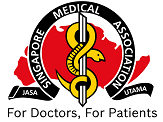Lau A, Neo GH, Lee HC
Correspondence: Dr Adrian Lau Cheng Kiang, adrianlck@yahoo.com
ABSTRACT
INTRODUCTION This study aims to describe the factors associated with surgical site infection (SSI) in elderly patients who underwent hip hemiarthroplasty following a hip fracture, in a single institution over a nine-year period.
METHODS All patients who underwent hip hemiarthroplasty between 1 January 2004 and 31 December 2012 in our hospital were included in the present study. The detection of SSI was carried out by a trained, independent infection control nurse using the United States Centers for Disease Control and Prevention criteria. Demographic and clinical data were collected retrospectively. Demographics and clinical factors were analysed for potential associations with SSI.
RESULTS Among the 1,320 patients who met the study inclusion criteria, a total 57 SSIs were documented, giving an infection rate of 4.3%. Patients who waited for more than one week for surgery had a statistically significantly higher risk of SSI (odds ratio 3.030, 95% confidence interval 1.075–8.545, p = 0.036). The presence of SSI was also significantly associated with increased length of hospital stay (p < 0.001). The two main microorganisms detected were methicillin-resistant Staphylococcus aureus and Pseudomonas aeruginosa, which accounted for 50.9% and 26.3% of the SSIs, respectively.
CONCLUSION We concluded that the number of days from admission to surgery is a main risk factor for the development of SSI. Steps should, therefore, be taken to prevent unnecessary delay of surgery in elderly patients requiring hip hemiarthroplasty.
Keywords: hemiarthroplasty, neck of femur, surgical site infections
Singapore Med J 2014; 55(10): 535-538; http://dx.doi.org/10.11622/smedj.2014137
REFERENCES
| 1. Whitehouse JD, Friedman ND, Kirkland KB, Richardson WJ, Sexton DJ. The impact of surgical-site infections following orthopedic surgery at a community hospital and a university hospital: adverse quality of life, excess length of stay, and extra cost. Infect Control Hosp Epidemiol 2002; 23:183-9. http://dx.doi.org/10.1086/502033 | ||||
| 2. Klevens RM, Edwards JR, Richards CL Jr, et al. Estimating health care-associated infections and deaths in U.S. hospitals, 2002. Public Health Rep 2007; 122:160-6. PMid:17357358 PMCid:PMC1820440 | ||||
| 3. Horan TC, Gaynes RP, Martone WJ, Jarvis WR, Emori TG. CDC definitions of nosocomial surgical site infections, 1992: a modification of CDC definitions of surgical wound infections. Infect Control Hosp Epidemiol 1992; 13:606-8. http://dx.doi.org/10.2307/30148464 | ||||
| 4. Emori TG, Culver DH, Horan TC, et al. National nosocomial infections surveillance system (NNIS): description of surveillance methods. Am J Infect Control 1991; 19:19-35. http://dx.doi.org/10.1016/0196-6553(91)90157-8 | ||||
| 5. Ridgeway S, Wilson J, Charlet A, et al. Infection of the surgical site after arthroplasty of the hip. J Bone Joint Surg Br 2005; 87:844-50. http://dx.doi.org/10.1302/0301-620X.87B6.15121 | ||||
| 6. Lee J, Singletary R, Schmader K, et al. Surgical site infection in the elderly following orthopaedic surgery. Risk factors and outcomes. J Bone Joint Surg Am 2006; 88:1705-12. http://dx.doi.org/10.2106/JBJS.E.01156 | ||||
| 7. Moran CG, Wenn RT, Sikand M, Taylor AM. Early mortality after hip fracture: is delay before surgery important? J Bone Joint Surg Am 2005; 87:483-9. http://dx.doi.org/10.2106/JBJS.D.01796 | ||||
| 8. Zuckerman JD, Skovron ML, Koval KJ, Aharonoff G, Frankel VH. Postoperative complications and mortality associated with operative delay in older patients who have a fracture of the hip. J Bone Joint Surg Am 1995; 77:1551-6. PMid:7593064 | ||||
| 9. Shiga T, Wajima Z, Ohe Y. Is operative delay associated with increased mortality of hip fracture patients? Systematic review, meta-analysis, and meta-regression. Can J Anaesth 2008; 55:146-54. http://dx.doi.org/10.1007/BF03016088 | ||||
| 10. Everhart JS, Altneu E, Calhoun JH. Medical comorbidities are independent preoperative risk factors for surgical infection after total joint arthroplasty. Clin Orthop Relat Res 2013; 471:3112-9. http://dx.doi.org/10.1007/s11999-013-2923-9 | ||||
| 11. Smith TO, Sexton D, Mann C, Donell S. Sutures versus staples for skin closure in orthopaedic surgery: meta-analysis. BMJ 2010; 340:c1199. http://dx.doi.org/10.1136/bmj.c1199 | ||||
| 12. Melzer M, Eykyn SJ, Gransden WR, Chinn S. Is methicillin-resistant Staphylococcus aureus more virulent than methicillin-susceptible S. aureus? A comparative cohort study of British patients with nosocomial infection and bacteremia. Clin Infect Dis 2003; 37:1453-60. http://dx.doi.org/10.1086/379321 | ||||
| 13. Blumberg HM. Community acquired versus healthcare-associated methicillin resistant (MRSA) infections: is the distinction blurring? Clinical Updates in Infectious Diseases 2009; 12:1-6. | ||||


